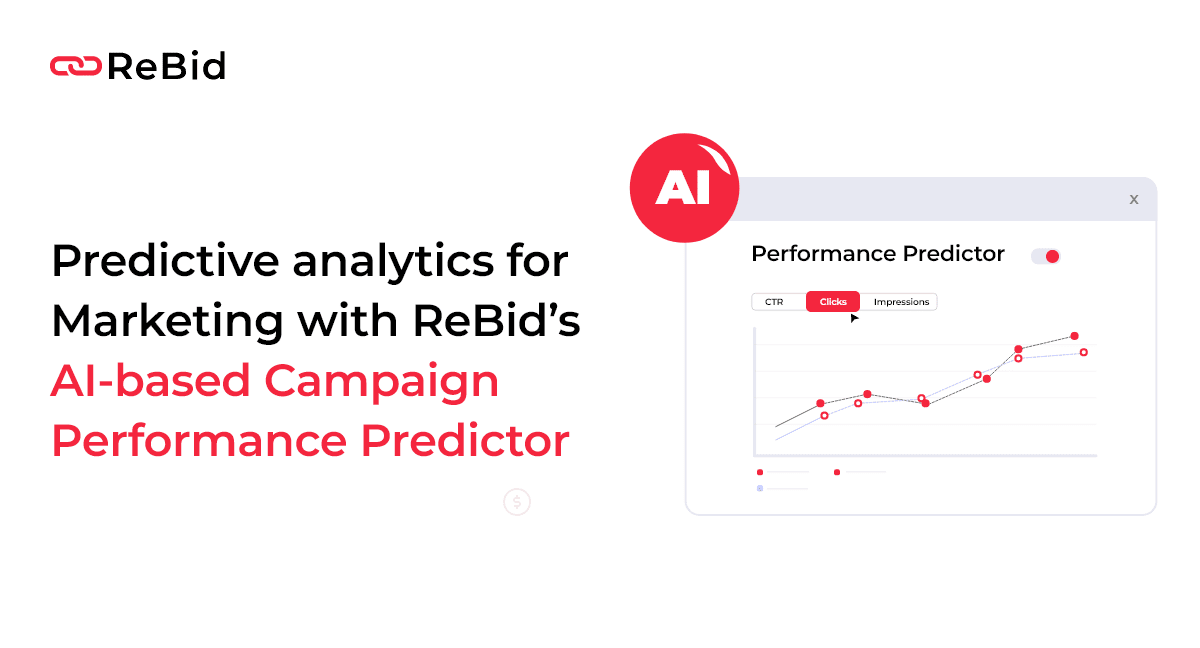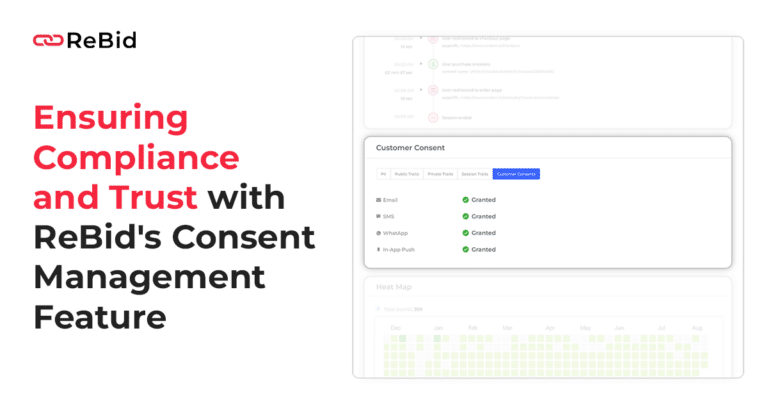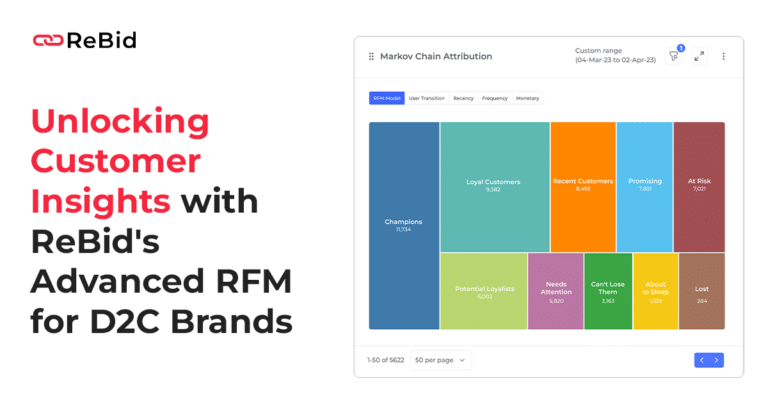The Internet revolutionized advertising as we knew it, with diverse digital media channels like search, social, e-commerce, mobile apps, online videos, banners, and so on. All of these channels deliver your key messages to potential customers exactly where they live now – online. Online advertising now dominates most marketing investments, taking a lion’s share – over half – of ad spends annually. Traditional digital advertising relies on click-based performance indicators such as clicks and click-through rate (CTR), demonstrating the relevance of each ad from the customer’s perspective. Improving CTR, as acknowledged by both researchers and practitioners, is an effective strategy for long-term outcomes from online advertising ecosystems. It’s also why research on predictive analytics for marketing has received a lot of interest recently.
The age of predictive analytics for marketing is well and truly here and ReBid is leading this charge. It is altering the abilities that performance media strategists, planners and managers must focus on, in order to become smarter, nimbler, and more effective PPC marketers.
Machine learning is now prevalent in many ad and marketing tools, including media buying, with algorithms increasingly powering ad generation and serving, bidding, and targeting. But the question that remains is how to use predictive analytics for marketing to improve the CTR prediction effectiveness? And how to use it religiously and repeatedly to produce hard dollar benefits of AI and predictive analytics for marketing and advertising industry?
Why track CTR: A starter’s guide
Tracking click-through rates (CTRs) continuously is arguably the most important challenge that any digital ad agency or marketing deals with. The aim is to determine the likelihood that an impression with a specific set of characteristics, such as teaser text and picture, weekday, placement, etc., would result in your target audience clicking on it. Basically that answers your question: what is predictive analytics for marketing?
This obviously plays a crucial part in optimizing content delivery: the sooner you know which types of content will perform best at what time, with which publishers, higher your chances of tailoring robust campaigns for the intended audiences. That’s the primary benefit of predictive analytics for marketing.
With continuous CTR evaluation, you learn more about customer client personas and improve marketing performance with highly tailored approaches across messaging, content and channel.
How ReBid achieves better advertising outcomes for all with predictive analytics for marketing
1. Publisher: CTR prediction and predictive analytics for marketing increase revenue by optimizing ad inventory, thereby enabling publishers to market their inventory more precisely
2. Advertiser: CTR prediction and predictive analytics for marketing aid cost optimization and maximizing return on investment. It increases the accuracy and effectiveness of marketing campaigns, brand-building activities, and customer acquisition & retention plans.
3. Media planners and campaign managers: Predicting CTR and predictive analytics for marketing help media planners and campaign managers determine how effectively their targeted keywords and advertisements are predicted to perform, enabling them to optimize content delivery even before the ad is served. Predictive and prescriptive AI-based insights also assist in planning, managing and controlling campaign budgets and timelines.
4. Search providers: Accurately predicting CTR and predictive analytics for marketing assist search providers in correctly ranking and pricing ads which is important to improve user experience and drive revenue growth.
5. Brands and businesses: Investing in a CTR prediction tool and predictive analytics for marketing empower your marketing team to make the most out of marketing budgets and drive the growth and revenue your business aspirations need them to.
6. Consumers: In the end, all marketing and advertising is about keeping users and consumers happy and engaged. CTR predictions and predictive analytics for marketing ensure that you serve the ads that make your target audience’s purchase decisions easier, their lives more convenient, and engage them in meaningful ways.
CTR prediction and predictive analytics for marketing create win-win propositions for everyone involved. What’s not to love?
How does ReBid’s AI predictor module work to improve predictive analytics for marketing
ReBid’s AI powers predict outcomes of your campaigns, i.e. expected CTR, clicks and impressions across different platforms given current strategy, providing you the 360 predictive analytics for marketing and prescriptive insights. It uses a holistic approach in delivering the final predictions to the users using an end-to-end machine learning system which applies best practices and techniques to deliver outcomes in a real-time environment.
Here’s the overall architecture of how Rebid AI predictor module works to improve predictive analytics for marketing.
- Data acquisition and pre-processing
Predictive analytics for marketing made by ML systems are only as good as the data on which they have been trained. At ReBid, we collect advertisers’ historical campaign performance data, including but not limited to previous performance KPIs, targeting information , budget , spends, etc. We store these data sets in a relational or no-SQL database, with an option of storing with any third-party service provider, depending on the client’s requirements or existing stacks. ReBid’s pre-processing pipeline handles missing data, eliminates noisy data points, discretizes (wherever needed) and normalizes continuous variables, and takes care of necessary variable transformations as well.
- Data analysis
Finding correlations between different attributes with respect to the target variables plays a major role in determining which features to include or exclude in the model. Data visualization techniques like plotting histograms, heat maps, box plots, scatter plots and probability density charts helps us in finding underlying patterns in the data set.
An example of data analysis for CTR prediction for predictive analytics for marketing would be analyzing click distribution across different times of the day. ReBid’s CTR Predictor then provides insights like the maximum number of clicks generated between 16:00-20:00 hrs and the lowest number of clicks recorded between midnight to morning 10:00. Publishers can use these insights to optimize their ad buying and selling activities. Other examples include analyzing CTR across different days of week, geographies, user device types etc.
- Data engineering
According to a Forbes survey , “Data preparation accounts for about 80% of data scientists’ workload.” This staggering statistic highlights the importance of feature engineering in data science. The interplay between features in CTR prediction and predictive analytics for marketing is a significant component influencing the prediction rate.
The sparseness of advertising data and the highly non-linear correlation between attributes can’t be taken into account by conventional feature extraction. Apart from determining the features that can be used for modeling, like ad relevance, ad position, keywords, search tags etc, we include few imputed variables by adding external data sources for weather conditions, list of events and holidays during targeting to come up with a holistic set of attributes to act as input set for our model.
- Model development
ReBid Buy, a unified MADtech platform, aggregates data from various walled gardens and global DSPs, allowing users to create multiple campaigns with partners of their choice. Each channel has its own focus and strengths. For instance, Google Ads is more keyword centric, so it’s used primarily for search ads. Facebook emphasizes more on audiences (Custom Audience, Lookalike) and is interest based. So it is typically used for interest-based paid social campaigns.
Keeping this in mind, we create individual models for each partner (Google Ads, Facebook Ads, DV360, Xandr etc), so that the parameters or varying elements relevant to each partner can be incorporated. This makes CTR predictions and predictive analytics for marketing highly relevant and accurate.. Further, these models are trained on creative-level data, creatives being the most granular aggregation for campaigns.
We use PyCaret, an open-source, low-code machine learning library in Python to train data on more than 20 ML algorithms and select the best ones after fine-tuning based on specific parameters.
- Model deployment
For model deployment and managing end-to-end machine learning lifecycle, we use an open source platform called ‘MLflow.’ It enables us to track various machine learning experiments, log parameters, maintain code versions, metrics and output files that can later be analyzed to make informed decisions and predictive analytics for marketing. The model files are saved and uploaded to AWS S3 bucket in the form of pickle files which are later easily deserialized and used to predict values, whereas the meta information pertaining to the model such as model name, date of creation , algorithm, parameters, metrics, accuracy and other such valuables are stored in the database.
- Serving real time predictions using Fast API
FastAPI is a modern, high-performance, lightweight web framework commonly used to build API with Python 3.7+ behind RESTful APIs. It has a great source of documentation which makes it easy to follow and implement concepts.
Using FastAPI we display real time impressions, clicks and CTR prediction trends for the next 10 days, by loading the pre-trained model directly from S3 instead of downloading it into memory. The FastAPI codebase is deployed into a docker container.
How to use Rebid Buy’s predictive AI insights for predictive analytics for marketing
- Open the campaigns dashboard and select any active campaign for which you want to see the predictions.
- Click on the “AI” button for that active campaign and a pop-up dashboard of “AI Insights” will be displayed. Then, simply click on the “AI Predictions” tab and get your future performance metrics predictions instantly.
How ReBid helps you to gauge your campaign’s performance with predictive analytics for marketing
ReBid gives you the power of predictive analytics for marketing. This has the ability to automatically create a wide variety of perceptive and rich data visualizations while continuously monitoring all of your KPIs across all of your channel partners.
ReBid’s one-click goal prediction and predictive analytics for marketing are extremely valuable for businesses to make better decisions about strategic planning, marketing spends and ROI, customer and target market segmentation, ROI prediction, and understanding the main drivers and reasons that lead to the success (or failure) of a marketing campaign.
Performance marketers, social media managers, and advertising professionals can easily comprehend complicated multi-channel attribution, make wise, data-obsessed judgments, and make tactical improvements when they have a clear picture of ad’s actual and predicted performance. That’s what realizing the full power of predictive analytics for marketing really looks like.





